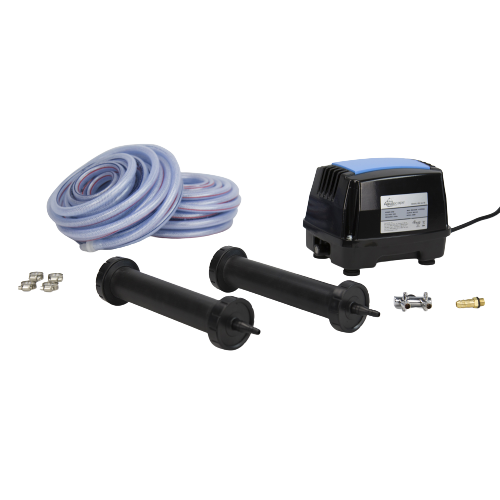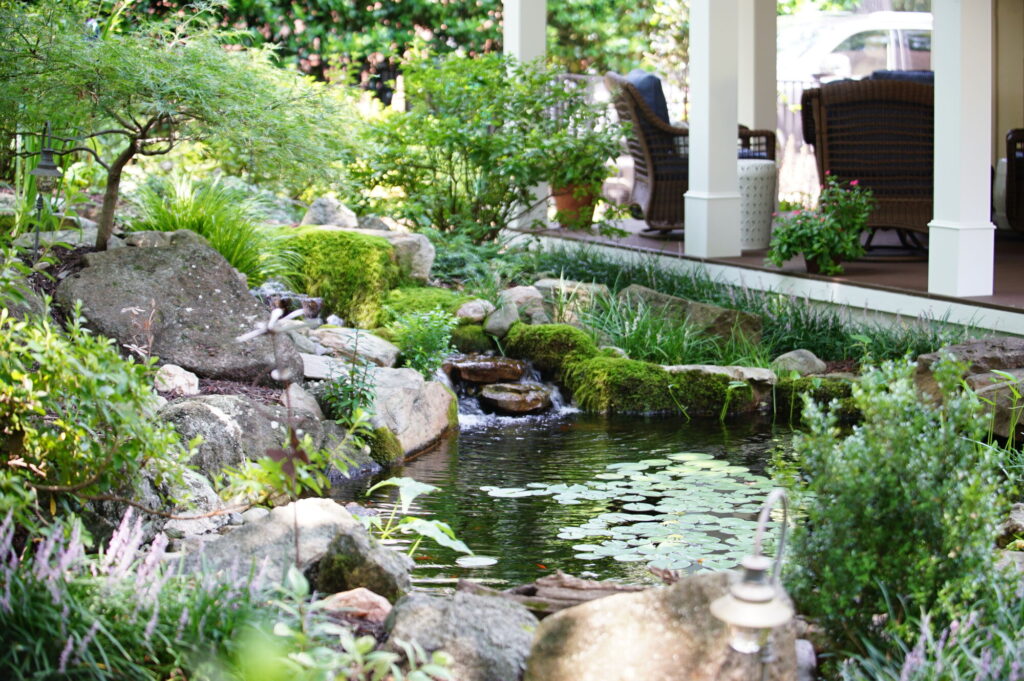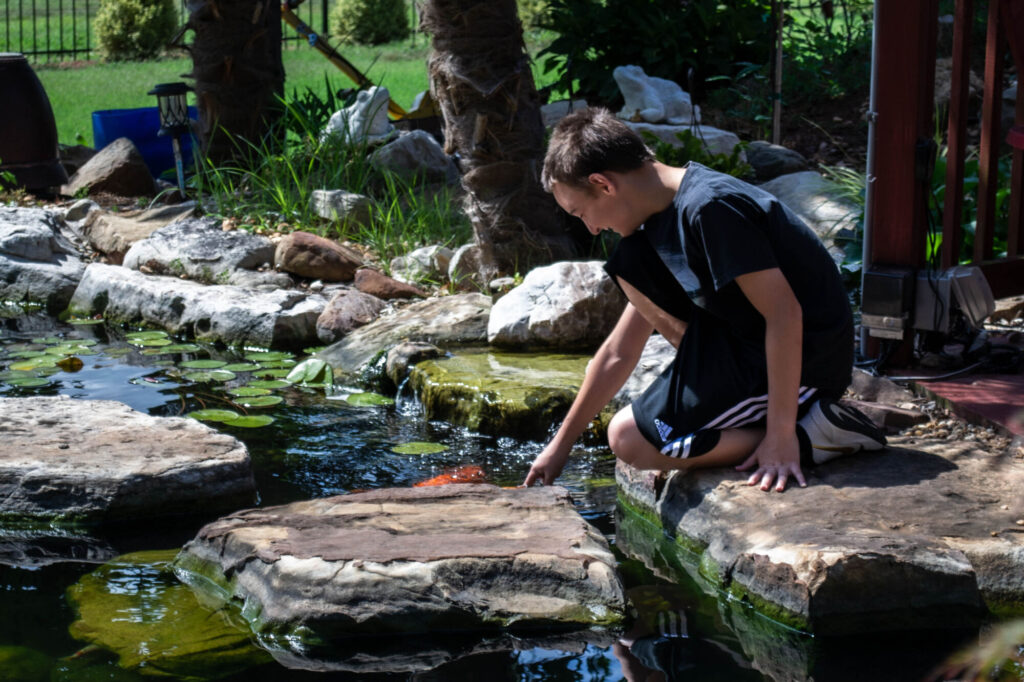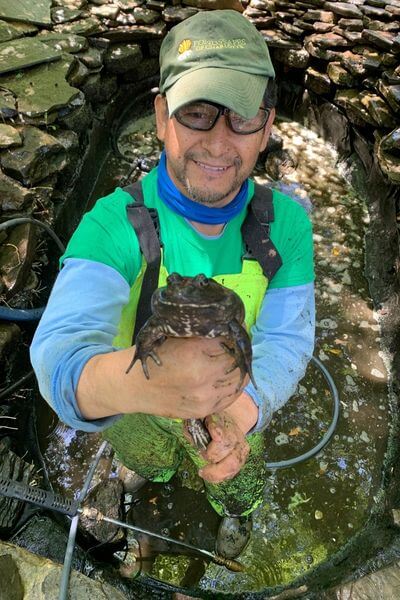
Ponds are enchanting additions to any landscape, offering a serene and captivating oasis filled with aquatic life. Whether it’s a small backyard pond or a larger, natural pond, maintaining a healthy and balanced ecosystem is crucial for the well-being of the pond and its inhabitants. One tool for achieving this balance is an aerator. In most cases, if you have a waterfall or stream that is running into your pond that will provide a sufficient amount of oxygen for the pond. However there are many benefits to having an aerator in your pond as well as a waterfall. In this blog post, we will explore the importance of aerators for ponds and how they can enhance both the aesthetic appeal and the overall health of these aquatic environments.

What are Pond Aerators and How Do They Work?
Pond aerators are devices designed to introduce oxygen into the water by creating water movement and increasing surface agitation. They typically consist of a pump that draws water from the pond and releases it back, creating a steady flow or a fountain-like display. This process helps oxygenate the water and prevents stagnation, which can lead to a host of problems such as foul odors, algae blooms, and poor water quality.

Benefits of Using Pond Aerators:
2.1 Improved Water Quality:
Aerators play a crucial role in maintaining excellent water quality. By increasing the oxygen levels in the pond, they promote beneficial bacteria growth that breaks down organic matter, reducing the accumulation of algae, sludge, and other harmful substances. This leads to clearer, cleaner water that is conducive to the health of aquatic life.
2.2 Algae Control:
Algae growth is a common issue in ponds, especially in stagnant water. Aerators help disrupt the growth of algae by creating movement on the surface, inhibiting the formation of dense algal mats. This prevents the pond from becoming unsightly and maintains a balanced ecosystem for fish and other aquatic organisms.

2.3 Fish and Wildlife Health:
A well-oxygenated pond is essential for the survival and vitality of fish and other wildlife. Adequate oxygen levels enable fish to thrive, promoting their growth, reproduction, and overall health. Furthermore, by increasing dissolved oxygen, aerators support the survival of beneficial microorganisms, insects, and amphibians, fostering a biodiverse environment.
2.4 Reduced Mosquito Breeding:
Stagnant water is a breeding ground for mosquitoes, which can quickly become a nuisance. Pond aerators disrupt the calm water surface, making it less conducive for mosquito larvae to hatch and thrive. This natural method of mosquito control helps create a more pleasant outdoor space.
2.5 Aesthetic Enhancement:
In addition to their functional benefits, aerators add a visually appealing element to ponds. The sight and sound of water cascading or spraying into the air create a tranquil and soothing atmosphere. Aerator fountains with various nozzle options can create beautiful water displays, enhancing the overall aesthetics of the pond and the surrounding landscape.
Choosing the Right Pond Aerator:
When selecting a pond aerator, several factors should be considered, such as pond size, depth, and desired flow rate. It is essential to choose an aerator that matches the specific requirements of your pond to ensure optimal performance and results. Consulting with pond experts or suppliers can help you make an informed decision based on your needs and budget.
Maintenance and Care:
To ensure the longevity and effectiveness of your pond aerator, regular maintenance is necessary. This typically includes cleaning or replacing the pump filters, inspecting and cleaning the fountain nozzles, and checking the overall system for any damage or clogs. Following the manufacturer’s instructions and performing routine upkeep will help keep your aerator functioning optimally. If you are located around the Charlotte, North Carolina area and would like help maintaining your pond or water feature check out our service options.
Pond aerators are indispensable tools for maintaining healthy and vibrant pond ecosystems. By improving water quality, controlling algae growth, supporting aquatic life, reducing mosquito breeding, and adding aesthetic appeal, aerators contribute to the overall well-being of ponds.

